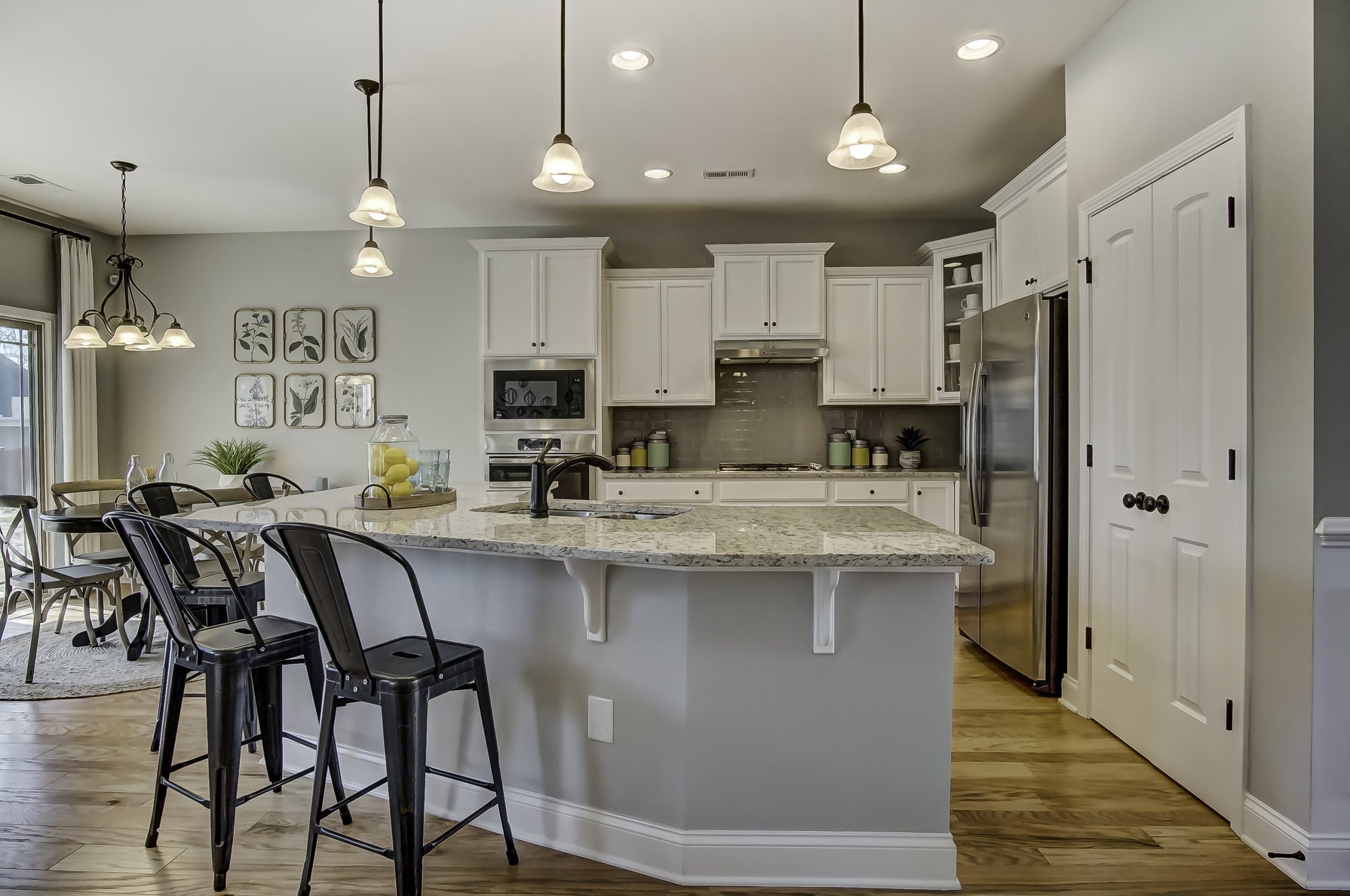Step into a culinary haven where your counter island reigns supreme. This comprehensive guide delves into the art of incorporating these kitchen centerpieces. We’ll explore diverse styles, materials, and functionalities to help you create a space that’s both practical and visually stunning. Whether you’re dreaming of a custom-built masterpiece or seeking budget-friendly solutions, this guide is your key to unlocking your kitchen’s full potential. Let’s elevate your culinary haven together.
Designing Your Dream Counter Island
Counter islands have become a kitchen staple, sought after for their ability to enhance both functionality and style. But with countless options available, choosing the right island for your space can feel overwhelming. Let’s break down the essentials, guiding you step-by-step towards the heart of your culinary dream.
Choosing the Right Type
The first step is determining what type of island best suits your needs and kitchen layout:
- Stationary Islands: These permanent fixtures offer unparalleled stability and are ideal for serious home chefs who need a dedicated workspace.
- Portable Islands: Seeking flexibility? Portable islands, often equipped with wheels, provide the freedom to reconfigure your kitchen layout on a whim.
- Custom-Built Islands: For those who crave complete control over every design detail, a custom-built island offers a unique opportunity to tailor the size, shape, and features to your exact specifications.
- Pre-Made Islands: If convenience and ease of installation are priorities, pre-made islands provide a hassle-free path to achieving the island look.
A World of Materials
The materials you select will significantly impact your island’s aesthetic, durability, and maintenance requirements.
Countertops
- Granite: Renowned for its durability and resistance to heat and scratches, granite offers timeless elegance and a vast selection of colors and patterns.
- Quartz: Engineered for low-maintenance living, quartz countertops boast exceptional durability and stain resistance. Their non-porous nature makes them incredibly hygienic.
- Butcher Block: Infuse warmth and a touch of rustic charm with a butcher block countertop. Ideal for chopping and food prep, butcher block brings an inviting, lived-in feel to the kitchen.
- Concrete: Embrace industrial chic with the sleek, modern appeal of a concrete countertop. Concrete offers surprising versatility, allowing for customization in color and texture.
- Marble: The epitome of luxury, marble instantly elevates your kitchen’s elegance factor. Keep in mind that marble requires more delicate care than other countertop materials.
Island Base
- Wood: A classic choice that complements various design styles, wood brings warmth and timeless appeal to your kitchen.
- Painted Finishes: Infuse personality and color with a painted finish. Opt for bold hues to create a statement piece or choose subtle tones to blend seamlessly with your existing cabinetry.
- Stainless Steel: For a professional-grade aesthetic and unparalleled durability, consider a stainless steel base. Stainless steel pairs beautifully with modern and industrial-inspired kitchens.
Storage Solutions: Maximizing Functionality
One of the most significant advantages of a counter island is the storage potential it unlocks. Here’s how to maximize every inch:
- Cabinets: Incorporate built-in cabinets to house pots, pans, small appliances, and other kitchen essentials.
- Pull-Out Shelves: Make accessing items in the back of your cabinets effortless with convenient pull-out shelves.
- Vertical Dividers: Keep baking sheets, cutting boards, and trays organized and within easy reach using vertical dividers.
- Bonus Storage: Get creative! Add a pot rack suspended above the island, install a built-in wine rack, or incorporate a dedicated spice storage solution.
DIY or Buy? Making the Right Choice
Deciding whether to build your own island or opt for a pre-made option is a crucial consideration.
DIY Island Pros
- Total Customization: Craft an island that perfectly reflects your style and meets your unique needs.
- Potential Cost Savings: Depending on material choices and your DIY skill level, building your own island can potentially save money.
DIY Island Cons
- Requires Carpentry Skills: Building a kitchen island demands a certain level of carpentry proficiency.
- Time Commitment: Be prepared to dedicate significant time and effort to the project.
Pre-Made Island Pros
- Convenience: Enjoy a hassle-free experience with a pre-made island, simply select your desired model and arrange for delivery.
- Variety: Explore a vast selection of designs, styles, materials, and price points to find the perfect fit.
Pre-Made Island Cons
- Less Customization: Pre-made islands may limit your ability to customize certain features.
- May Be More Expensive (Sometimes): Depending on the complexity of the design and materials used, pre-made islands can sometimes be more expensive than DIY options.
Finding the Perfect Island: Key Considerations
- Kitchen Size: Thorough measurements are crucial. Ensure your island fits comfortably within your kitchen layout without hindering traffic flow.
- Open Floor Plans: In an open-concept space, your island can serve as a visual divider, subtly delineating the kitchen from other living areas.
- Large Families: If you frequently entertain or have a large family, prioritize an island with ample seating and countertop space for food preparation and serving.
What is a Counter Island?
A counter island is a freestanding unit typically positioned in the center of the kitchen. More than just a countertop, it’s a multi-functional hub for cooking, dining, storage, and socializing. Counter islands come in various shapes, sizes, and styles to suit every need and design aesthetic.
Distinguishing Counters and Islands
While both are essential kitchen elements, understanding their differences is key to optimizing your space.
Counter:
* Fixed along the kitchen perimeter.
* Typically 36″ high.
* Primary workspace for food prep, appliance storage.
Island:
* Freestanding unit in the kitchen center.
* Height can vary from standard counter height to bar height (40″-42″).
* Offers additional workspace, storage, seating, and can serve as a visual divider.
The Cost of Countertop Installation
The cost of installing a counter island is influenced by several factors:
- Material: Material choice plays a significant role, with laminate being the most budget-friendly and options like marble and quartz commanding higher prices.
- Size and Style: Larger, more intricate islands will typically require more material and labor, increasing the overall cost.
- Labor Costs: Installation complexity, including the need for plumbing or electrical work, will impact labor costs.
- Value Addition: Remember that an island countertop is an investment. It adds functionality, potentially increases your home’s value, and enhances your kitchen’s visual appeal.
Conclusion
Incorporating a counter island is a transformative decision that can elevate your kitchen’s functionality, style, and overall value. By carefully considering your needs, exploring various design options, and selecting the right materials, you can create a culinary haven that reflects your unique taste and enhances your everyday life.
- What Happened to Lane Furniture in Mississippi? - April 23, 2025
- Japanese Floor Beds: A Comprehensive Guide - April 23, 2025
- King Size Bed Pillow Arrangements: Styling Ideas & Inspiration - April 23, 2025










